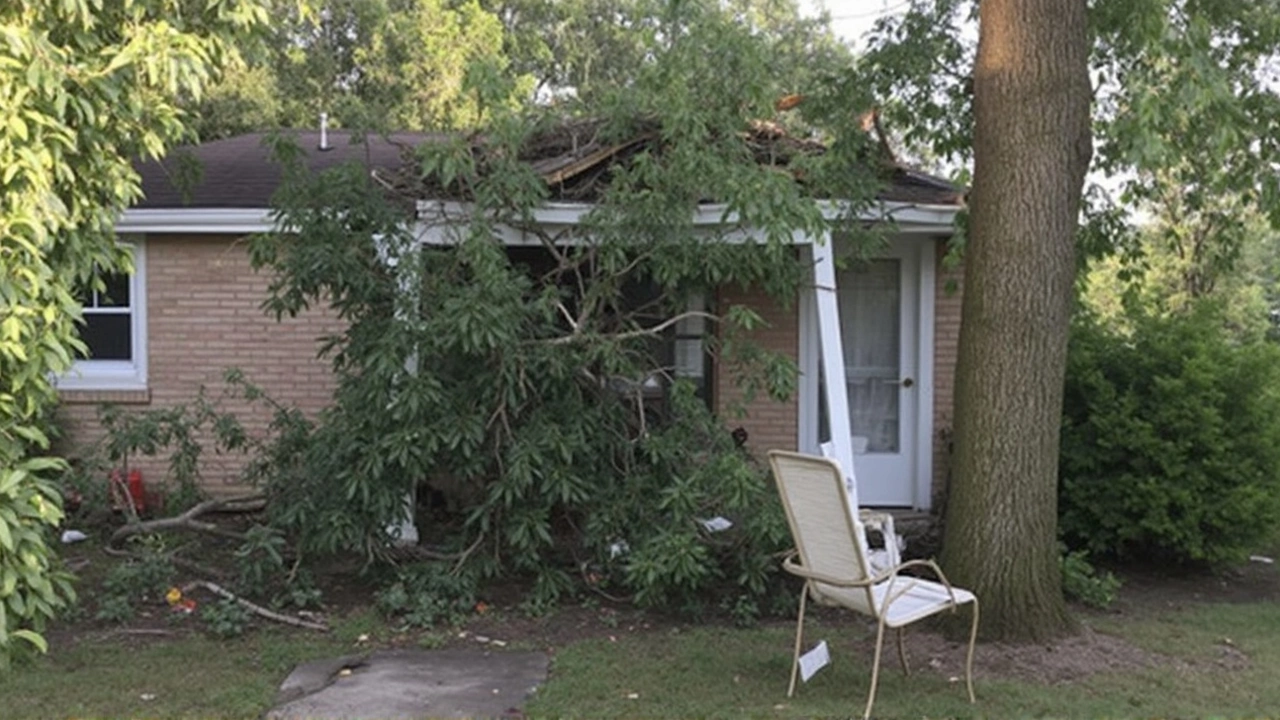St. Louis Tornado Leaves Path of Destruction
A powerful tornado ripped through St. Louis in the early afternoon on May 16, turning neighborhoods upside down in just minutes. According to the National Weather Service, the tornado touched down in Clayton, Missouri at about 2:30 p.m., tearing east at blistering speed—nearly 50 mph. The storm ripped roofs from homes as if they were made of cardboard, knocked down walls, and took power lines with it, cutting electricity for about 100,000 people.
The damage spread for miles. Over 5,000 properties across the metro area bore the brunt, with streets littered with debris, twisted cars, and snapped trees. Some buildings weren’t just damaged—they were flattened. Families who once had secure homes now faced shattered windows and caved-in roofs, while others stared at the empty spaces where their houses once stood.
Mayor Cara Spencer described the scene as 'truly horrendous' and moved quickly to impose a curfew on the hardest-hit areas. The order wasn’t just about keeping people off the streets; it was aimed at making search and rescue easier, and to keep lootings at bay when so many homes stood wide open and vulnerable. First responders worked nonstop, knocking on door after door searching for anyone who needed help. Hospitals quickly filled up with patients—15 children were rushed to St. Louis Children’s Hospital, and Barnes-Jewish Hospital admitted at least 20-30 people, with some in critical condition.
For many who survived, the terror hasn’t faded. When you're in the middle of a sunny day and the sky suddenly turns menacing, followed by sirens and the unmistakable roar of a tornado, time slows down. Survivors described clinging to basement pillars, praying their houses would hold as walls shook and windows shattered overhead.
Broader Severe Weather Threat Across the U.S.
Tornadoes weren’t the only threat. This was just one branch of a severe storm system sweeping the U.S. The same weather front churned eastward, with deadly results reaching even into Virginia, where two fatalities brought the death toll to at least nine. Wisconsin and southern Illinois caught portions of the tempest as forecasters sent out new warnings for everything from hail the size of baseballs to winds strong enough to topple semi trucks.
The severe storms aren’t done yet. The National Weather Service warned that the risk isn’t confined to the Midwest. Appalachia is in the crosshairs for more violent weather, including possible tornadoes and hurricane-force winds. Entire communities are on high alert, keeping a nervous eye on the sky and weather apps.
And that’s not the end—on May 17, meteorologists predict another round of intense storms poised to hit Texas, Oklahoma, and Arkansas. Residents across these states could face more tornadoes, huge hail, and damaging winds. Emergency crews and local officials are already prepping, hoping to avoid the kind of disaster St. Louis just endured.
For now, rebuilding in Missouri starts even as the next wave of storms looms. People are boarding up what’s left of their homes, checking on neighbors, and hoping this run of severe weather doesn’t bring more tragedy.





